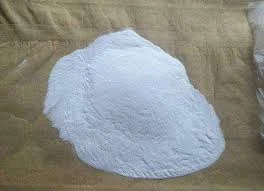Understanding Methylcellulose and Hydroxypropyl Methylcellulose Properties, Applications, and Benefits
Methylcellulose (MC) and Hydroxypropyl Methylcellulose (HPMC) are two widely used cellulose derivatives that play a vital role in various industrial and pharmaceutical applications. With their unique properties, these compounds have become essential ingredients in the formulation of numerous products, from food and cosmetics to pharmaceuticals and construction materials.
Chemical Structure and Properties
Methylcellulose is a non-ionic cellulose ether that is derived from natural cellulose. It is produced by the methylation of cellulose, resulting in a compound that is soluble in cold water and forms a gel when heated. The degree of substitution—determining how many hydroxyl groups have been replaced by methyl groups—affects its solubility and gelling properties. Hydroxypropyl Methylcellulose is a derivative of methylcellulose, with additional hydroxypropyl groups introduced into its structure. This modification enhances its solubility in both hot and cold water, making it a versatile ingredient in various formulations.
Both MC and HPMC exhibit a range of beneficial properties, including thickening, gelling, film-forming, and water-retention abilities. These characteristics make them ideal for use as emulsifiers, stabilizers, and binders, contributing to the overall quality and performance of the end products.
Applications in Various Industries
1. Food Industry MC and HPMC are commonly used as food additives, where they serve as thickening agents, stabilizers, and texturizers. In gluten-free baking, these compounds help improve dough texture and moisture retention, providing a desirable consistency to products such as bread and pastries. They also enhance the creaminess of sauces, dressings, and dairy products, thereby improving mouthfeel and overall sensory experience.
mecellose hpmc

2. Pharmaceutical Industry In the pharmaceutical sector, HPMC is extensively employed in the formulation of tablets and capsules. Its properties enable controlled release of active ingredients, allowing for prolonged therapeutic effects. In suspensions and emulsions, HPMC acts as a stabilizer, preventing phase separation and ensuring uniform distribution of the active components. Moreover, HPMC is commonly used as a binder in solid dosage forms, ensuring that tablets maintain their integrity under various conditions.
3. Cosmetics and Personal Care The cosmetic industry leverages the thickening and film-forming capabilities of MC and HPMC to improve the texture and application of lotions, creams, and gels. These compounds help in maintaining a stable emulsion and enhance moisture retention in skin formulations. The film-forming property also makes them valuable in hair care products, promoting shine and manageability.
4. Construction Industry In construction, HPMC is used as an additive in mortar and plaster formulations. It improves the workability of these materials, allowing for easier application and better adhesion to surfaces. Additionally, these cellulose derivatives enhance the water retention properties of construction mixes, ensuring that curing occurs uniformly and effectively.
Environmental Concerns and Biodegradability
One of the significant advantages of MC and HPMC is their biodegradable nature. As derivatives of natural cellulose, they break down into non-toxic byproducts in the environment, making them a more sustainable choice compared to synthetic polymers. This aspect has garnered attention in industries seeking to adopt greener practices and reduce their environmental footprint.
Conclusion
Methylcellulose and Hydroxypropyl Methylcellulose are indispensable materials across a multitude of industries, providing unique properties that enhance product performance and consumer experience. With ongoing research and development, their applications continue to expand, promising new possibilities and innovations. As businesses increasingly prioritize sustainability, the biodegradable nature of these cellulose derivatives positions them as a preferable choice in formulating safer and more environmentally friendly products. Their versatility, coupled with beneficial characteristics, ensures that MC and HPMC will remain integral to a diverse range of applications for years to come.
-
Rdp Powder: Key Considerations for Wholesalers in the Building Materials IndustryNewsJul.08,2025
-
Key Considerations for Wholesalers: Navigating the World of Hpmc - Based ProductsNewsJul.08,2025
-
Hpmc Detergent: Key Considerations for WholesalersNewsJul.08,2025
-
Key Considerations for Wholesalers: China Hpmc For Tile Adhesive, Coating Additives, Concrete Additives, and MoreNewsJul.08,2025
-
Crucial Considerations for Wholesalers: Navigating the World of Construction MaterialsNewsJul.08,2025
-
Key Considerations for Wholesalers Sourcing Additive For Cement, Additive For Concrete, Additive For Putty from Additive Manufacturer Shijiazhuang Gaocheng District Yongfeng Cellulose Co., Ltd.NewsJul.08,2025




